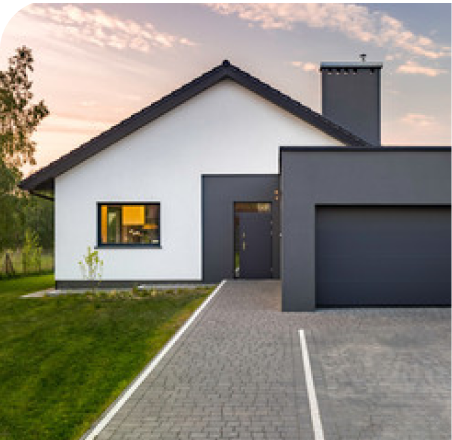Winter Home Safety Tips to Keep You Warm and Stress-Free
September 30, 2025

Quick Summary
Staying safe in winter requires preparation to reduce risks and maintain comfort. Simple steps can help prevent frozen pipes, reduce fire hazards, and protect against porch theft while also keeping your home energy efficient. Professional installation and 24/7 monitoring from Brinks Home™ provide added confidence through the season.
Prevent Cold Weather Risks: Protect pipes, heating systems, and detectors before problems start.
Improve Energy Efficiency: Seal drafts and use smart thermostats to lower energy bills.
Secure Your Home: Deter theft and improve safety with lighting, cameras, and monitoring.
How to Prevent Cold Weather Hazards at Home
Frozen pipes, heating failures, and space heater fires are among the most common seasonal problems. Preventing them starts with a few essential steps:
Insulate exposed pipes in unheated areas like basements, attics, and garages.
Keep thermostats set to 55°F or higher when away from home.
Test smoke and carbon monoxide detectors and replace batteries.
Keep space heaters at least three feet from flammable materials.
Schedule professional HVAC servicing before cold weather hits.
Temperature sensors can alert you when indoor temperatures fall unexpectedly, giving you time to act before damage occurs.
How to Make Your Home Energy Efficient in Winter
Heat loss can drive up utility costs during the colder months. Small adjustments and smart upgrades can make your home more energy efficient while improving comfort:
Seal windows and doors with weatherstripping.
Have fireplace flues inspected and closed when not in use.
Replace air filters every 4 months to improve HVAC performance.
Program smart thermostats to match your family’s daily schedule.
These steps help reduce strain on heating systems and can lower energy bills, with smart home automation devices supporting efficiency and maintaining comfort throughout the season.
How to Protect Packages and Deliveries
Online shopping peaks during winter, making package theft more common. To secure your deliveries:
Install a doorbell camera to monitor packages in real time.
Add outdoor cameras with clear visibility of the street and entry.
Enable mobile alerts for motion or unexpected activity.
Use two-way audio to address suspicious behavior immediately.
How to Improve Outdoor Lighting and Entry Security
Dark evenings increase risk around the home—especially at entry points. Motion-activated lighting helps prevent falls and can deter unwanted visitors. Paired with smart locks and professionally installed access controls, these features make coming and going safer after dark.
Replace burned-out exterior bulbs around entry points.
Use motion-activated lighting along walkways and driveways.
Keep steps and paths clear of snow and ice.
Ensure smart locks and garage controls are working properly.
How to Keep Your Home Safe While Traveling
Holiday travel and winter getaways leave homes vulnerable if not properly secured. Setting up remote access lets you check in from anywhere, and professional 24/7 monitoring ensures your home stays protected while you’re away.
Set smart lighting schedules to mimic occupancy.
Enable entry and motion alerts to monitor activity remotely.
Use professionally installed smoke, CO, and temperature monitoring devices.
Add water leak detectors to reduce the risk of pipe damage.
Why Brinks Home?
Winter brings unique safety and comfort challenges, but preparation makes a difference. Brinks Home provides professionally installed safety and security devices, seamless smart home integration, and 24/7 monitoring to help keep your home protected year-round. From reducing cold weather safety risks to improving energy efficiency, Brinks Home gives you confidence through the season. If you’re ready to secure your home with confidence, Brinks Home offers professionally monitored systems and home automation solutions tailored to your lifestyle. Contact us today to get started with a free quote.
FAQs
How can I make my home more energy efficient for winter?
Seal gaps around windows and doors to prevent warm air from escaping. Use smart thermostats to automatically adjust temperatures and replace HVAC filters every 4 months. These updates help reduce heating costs while maintaining a safe and comfortable home environment.
What should I do to avoid frozen pipes?
Insulate exposed or exterior-facing pipes—especially in attics, basements, and garages—and keep your home heated above 55°F, even when you’re away. Open cabinet doors under sinks to allow warm air to circulate. Also, consider installing smart thermostats or water leak sensors for added protection.
What safety devices are helpful in winter?
Smart thermostats, temperature sensors, and professionally monitored smoke and carbon monoxide detectors can all reduce seasonal risks. Video doorbells, outdoor cameras, and motion lighting also help protect your home against theft and accidents.



